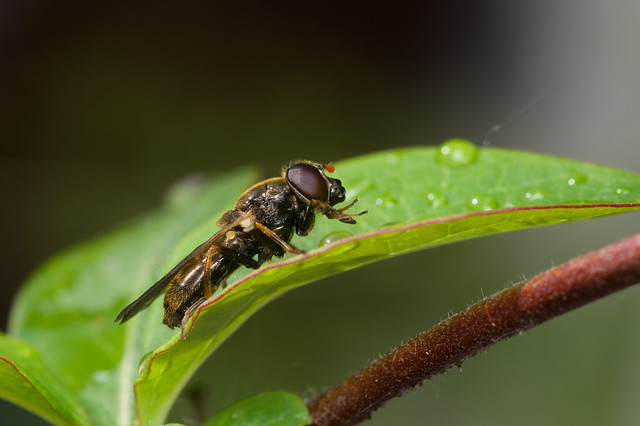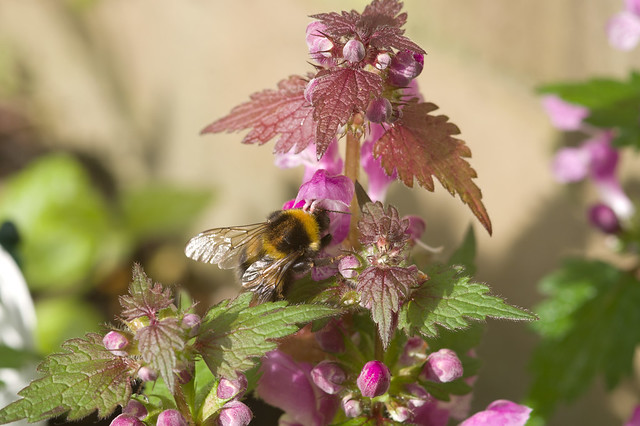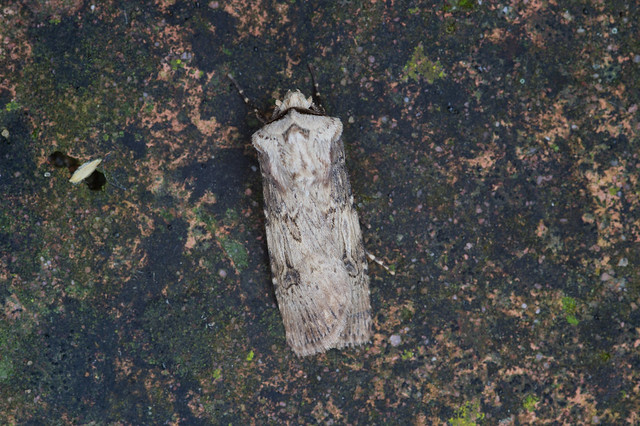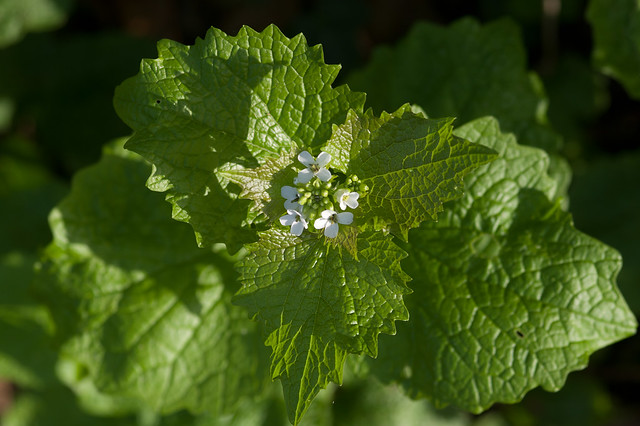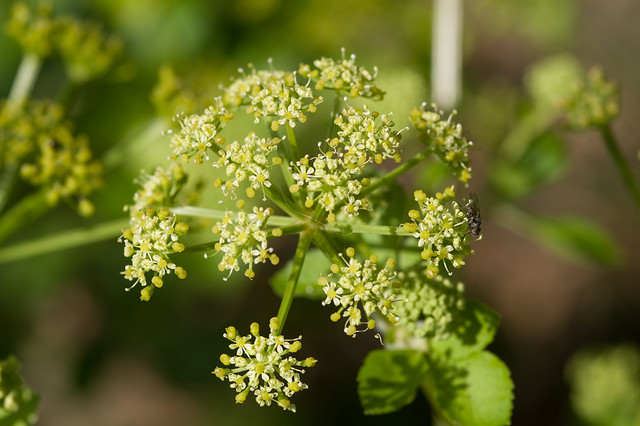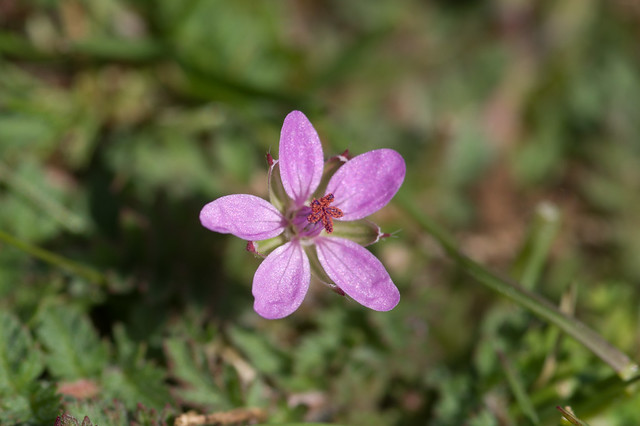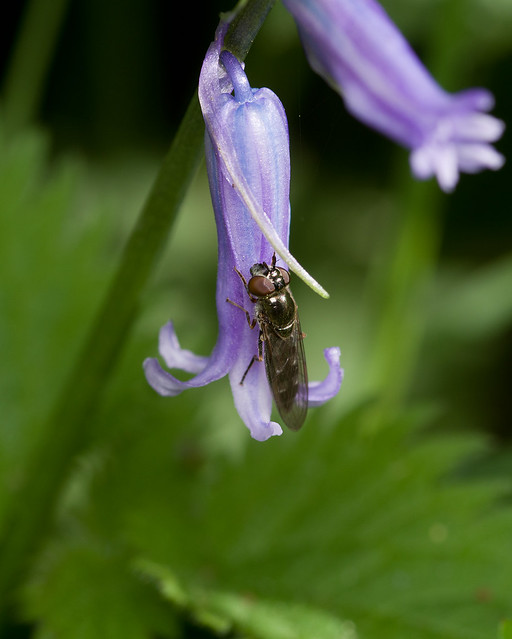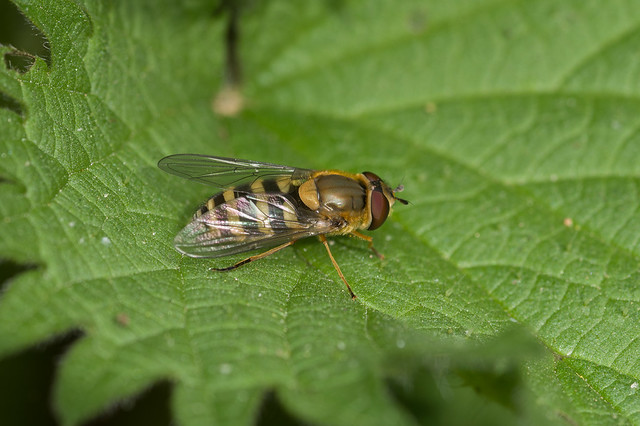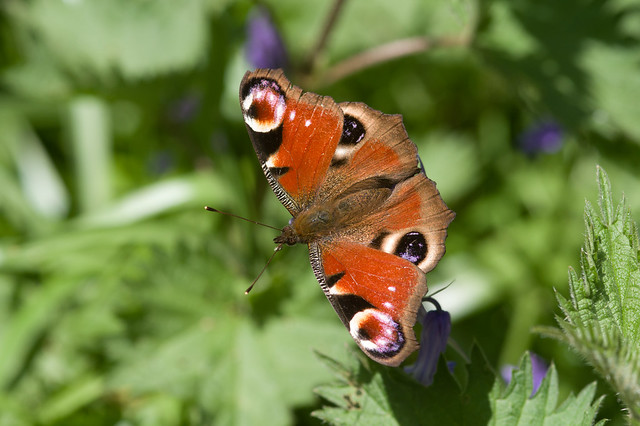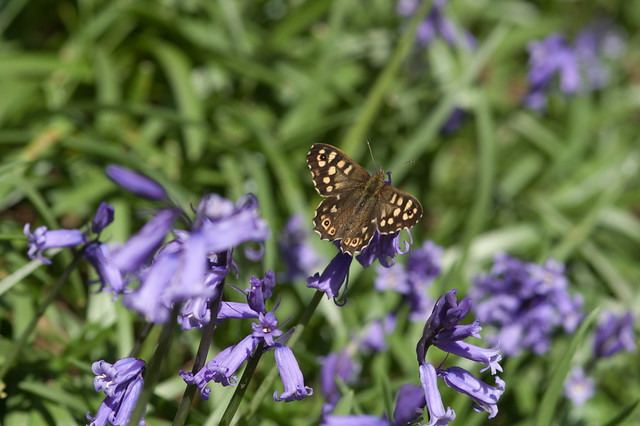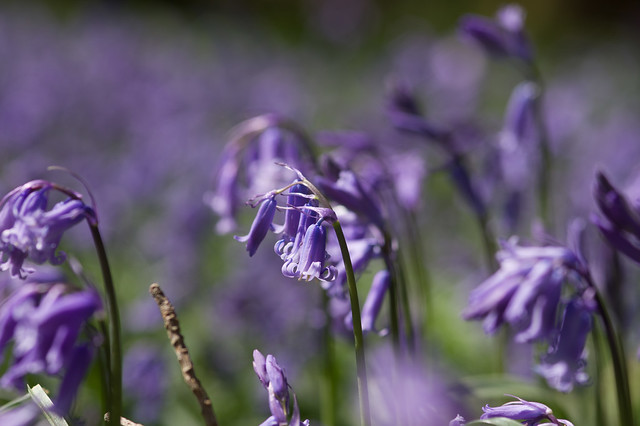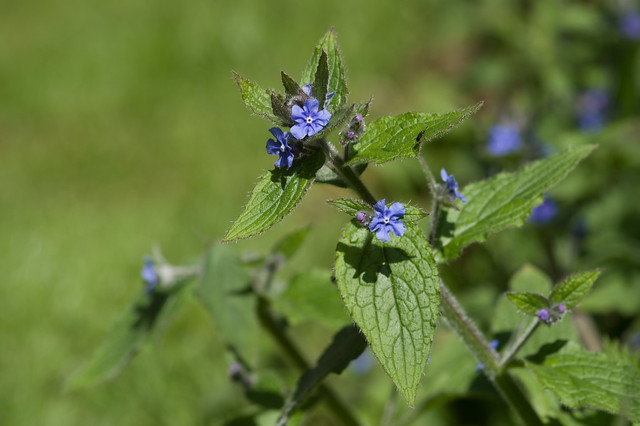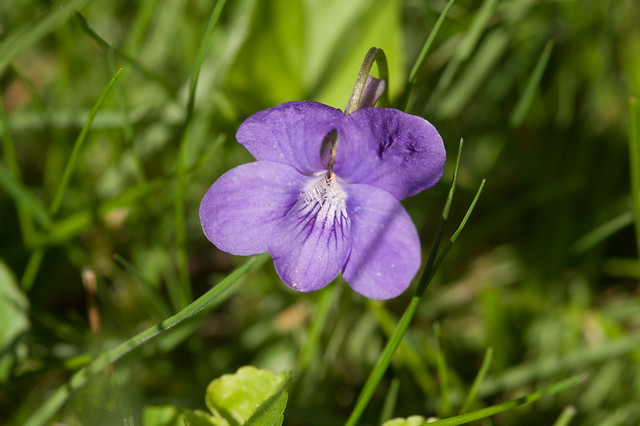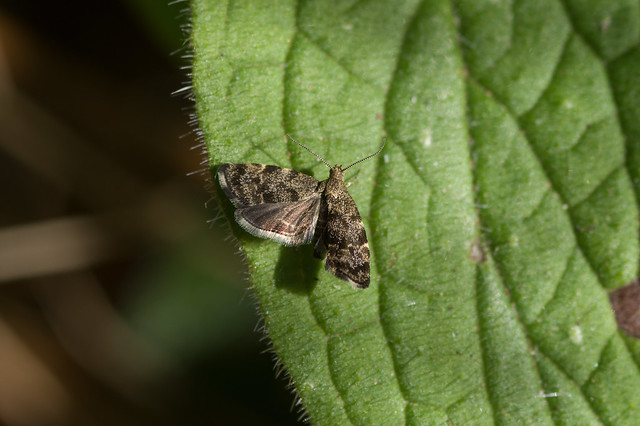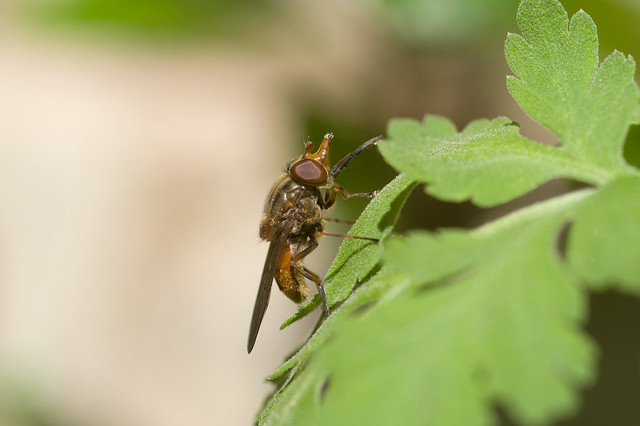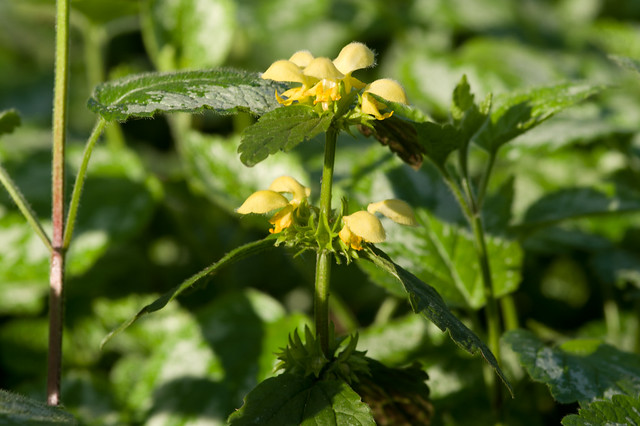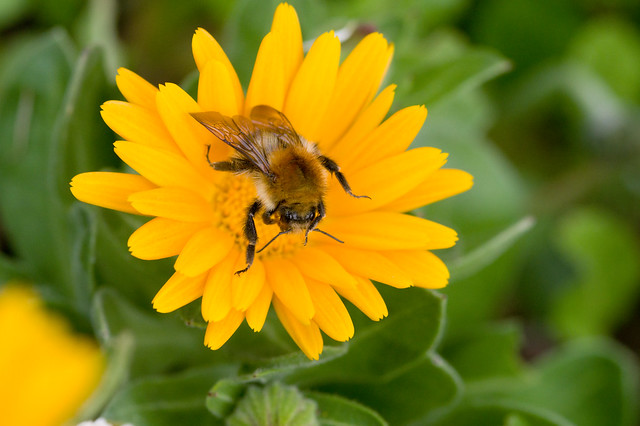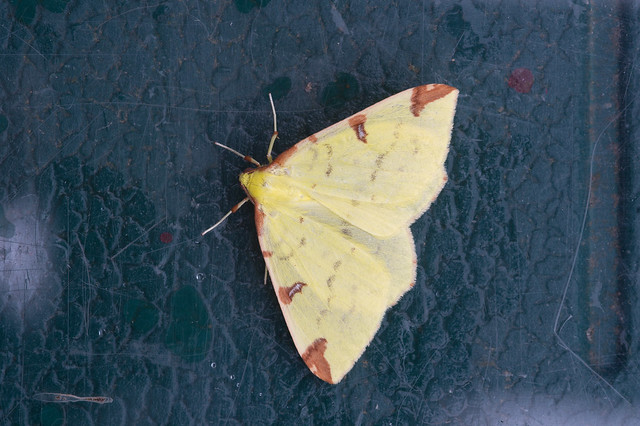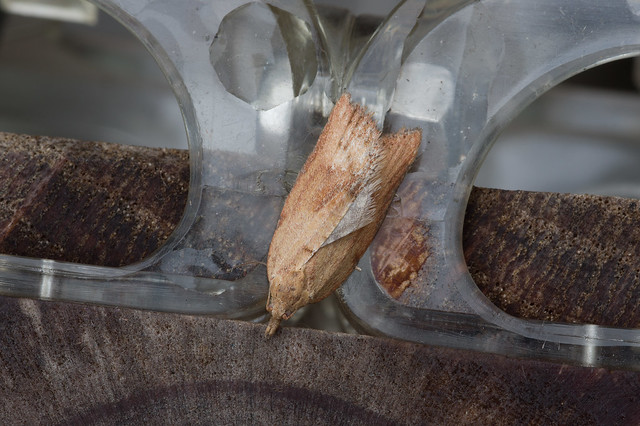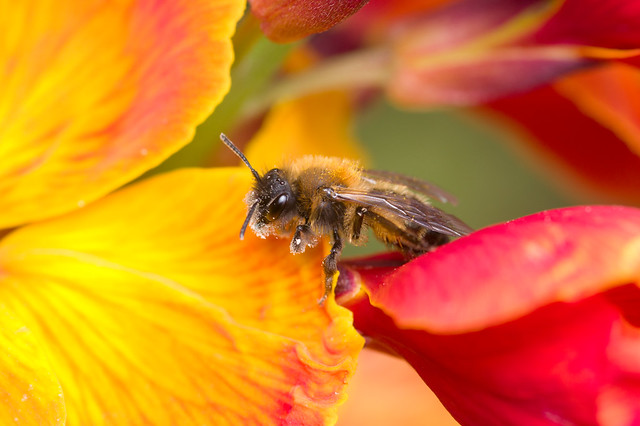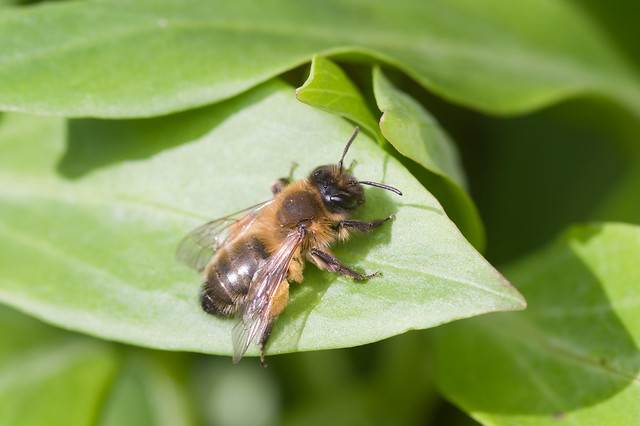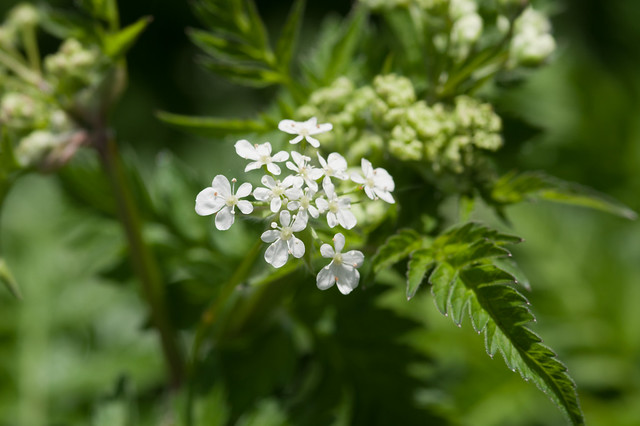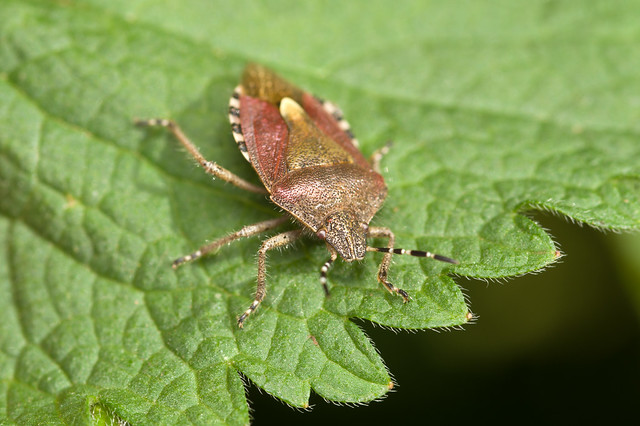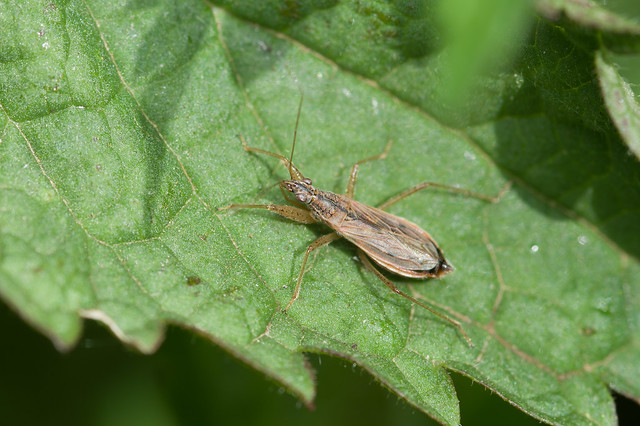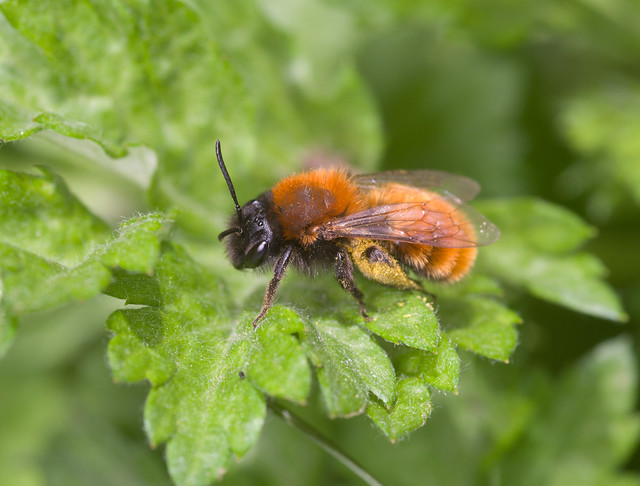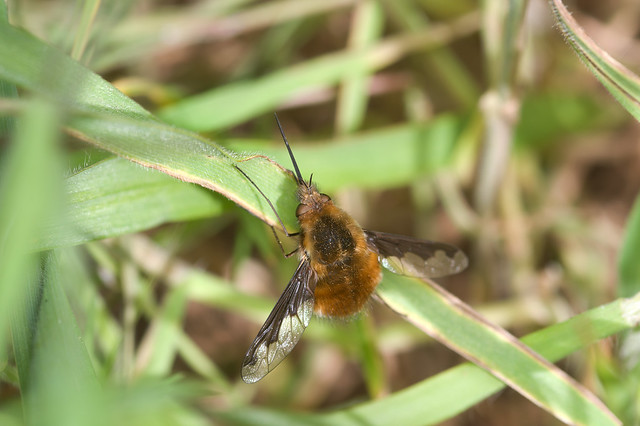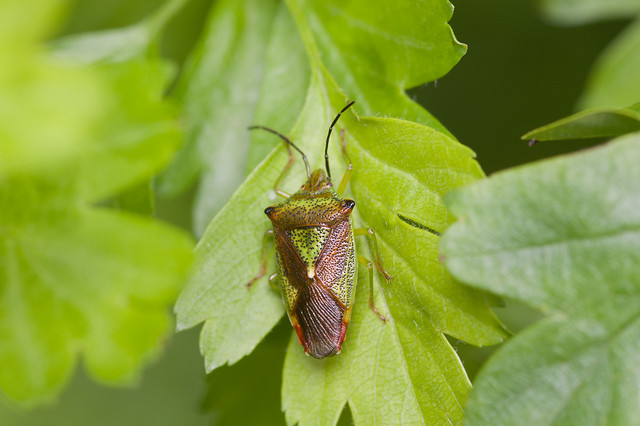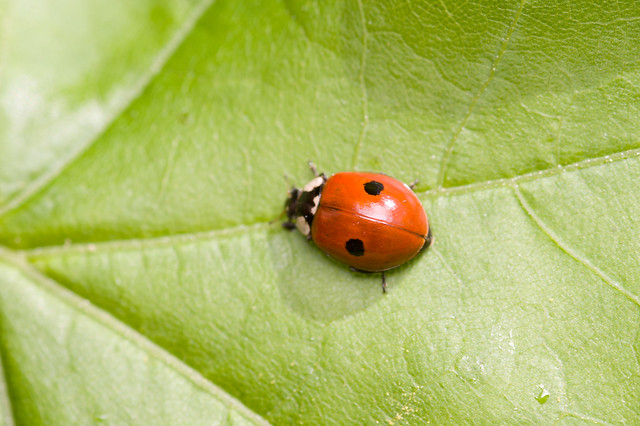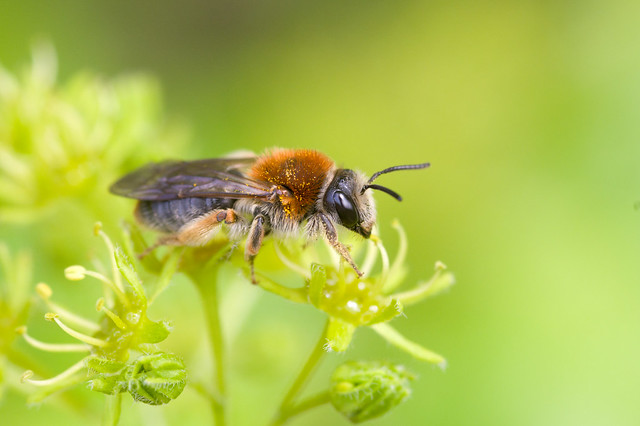We landed in marrakech at dusk, the cool air giving little hint of the desert heat we would soon be experiencing. After a particularly tedious wait at immigration, we were glad to find our transfer to our hotel waiting for us at arrivals. One short taxi ride later and we were wending our way through the souks to our hotel (we were staying inside the medina, whose narrow alleyways are inaccessible by car).
Our home for four nights was the Riad Dar Ihsanne, a charming little five room hotel, secluded in a quiet street away from the noise and crowds. I'd definitely recommend the Riad, as well as being quiet and clean, it was a short walk from the main square and had a lovely rooftop terrace which you could retreat to when in need of some peace and quiet.
On our first morning I woke up early and headed to the roof to see what birds might be around, but before I even got there I was greeted by a pair of house buntings which dropped into the enclosed central courtyard. These delightful little birds were common all over the city, their russet underparts a living extension of the ancient walls of the medina.
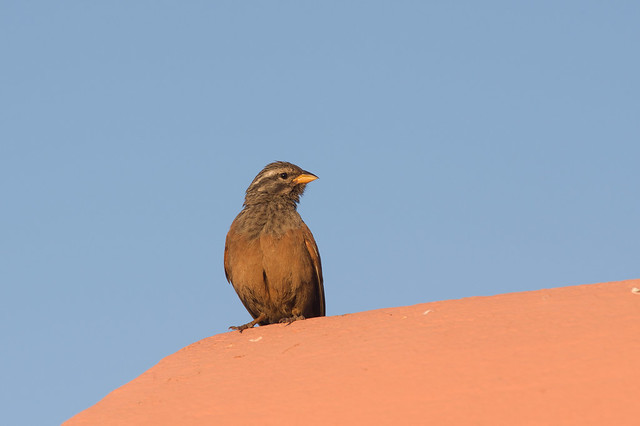 |
| Male House Bunting |
The buntings duly admired, I continued onto the roof, to be greeted by the screams and twitters of a whirling throng of swifts. Commonest were the stocky little swifts, their white rumps gleaming in the morning sun as they fluttered in tight knit flocks. Less numerous were scimitar-winged pallid swifts, their grace and speed in sharp contrast to their smaller cousins. It was a real pleasure to watch the latter at close quarters, the bright desert light providing the perfect illumination to tick off the subtle differences from our own common swifts.
 |
| Little Swift |
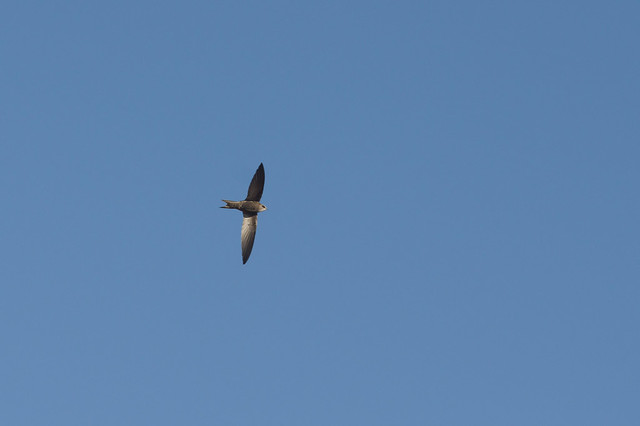 |
| Pallid Swift |
Whilst the swifts resembled a bleached version of their northern relatives, the starlings that were chasing each other between the television aerials looked as though they'd been out in the sun too long, and been burnt to a jet-black crisp. Upon closer inspection these Spotless Starlings proved to share the iridescence of their congeners, flashing purple and green as they twisted and turned. The final new bird for the morning came in the shape of a pair of common bulbuls, another ubiquitous species throughout the city, which announce their presence with tropical sounding flutes and whistles.
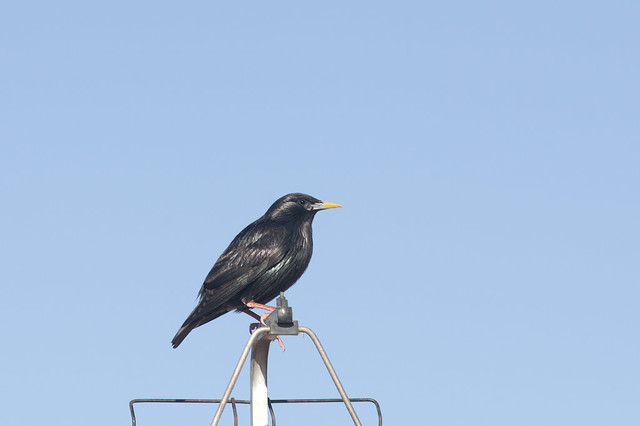 |
| Spotless Starling |
After a simple but delicious meal of stone-baked bread and jam, washed down with freshly squeezed orange juice and strong black coffee, we headed out to explore the city. Wildlife was unsurprisingly thin on the ground given the throngs of people, but in the quieter areas of the many gardens many of the same species from the terrace could be found. A highlight was spotting a Peregrine sitting on the Koutoubia mosque which dominates the centre of the city, with a couple of kestrels keeping it company nearby.
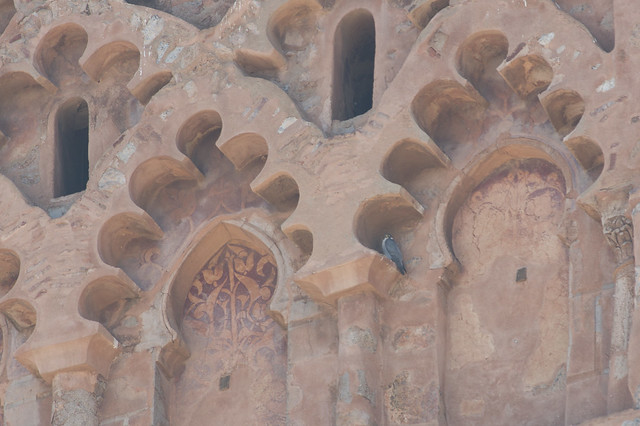 |
| Peregrine on the Koutoubia Mosque |
In the evening we made a visit to the decadent surroundings of the Mamounia Hotel, reported a favourite with Winston Churchill. As well as boasting opulent art-deco decor, the hotel has some of the largest gardens in the city. As well as the usual startings and house sparrows, we also had the unexpected pleasure of a hoopoe flying up from the grass, as well as our first sighting of an African Chaffinch. These are the same species as the familiar garden bird in the UK, but look rather different, with an all blue head joining onto a body coloured in with pastels. A word of warning about the Mamounia though, be prepared to pay the price of a meal for two elsewhere in the city for a single drink here!
The following day we headed out of the city and into the atlas mountains which lie just a couple of hours drive south. We stopped off at the village of Imlil in the foothills, and enjoyed a cup or two of mint tea in a traditional berber house, whilst red-rumped swallows flew overhead, and the song of serins rang out from the hillsides. Suitably refreshed we headed on to the primary destination of the day, the ski-resort at Oukaimeden. Before we got there though, we spotted a large group of people at the side of the road, sporting a variety of binoculars and telescopes. Never being shy to jam in on someone else's bird, I hopped out and asked what they'd got. "Woodpecker, calling from the trees, but we haven't seen it yet" came the reply, just as the bird announced itself again from the depths of a wooded slope. More in hope than expectation I raised my binoculars to my eyes, to be greeted by the stunning sight of a male Levaillant's Woodpecker sitting fully in the open about 20 metres away! These North African endemics strongly resemble our own green woodpecker, but have a plain grey face with a single streak of black.
After a bit of basking in the glory of finding this elusive bird (ok that might be putting it a little strongly), we made our way back to the car, ticking off a few familiar birds in the shape of a Great Tit, Robin and Blue Tit. The latter was a bit more significant though, as it belonged to the African clade of the Blue Tit group, which has recently been split to be a species in its own right, the African Blue Tit. The differences weren't immediately all that striking in the shade of the woods, but seen in bright light they flash a brilliant blue.
Our next stop was at the first car park at Oukaimeden, where we were greeted by a mixed flock of Choughs and Alpine Chough feeding on the grassland, and on a smoking heap of rubbish! Around the hotels and restaurants flocks of Rock Sparrows joined Black Redstarts and yet more Alpine Choughs.
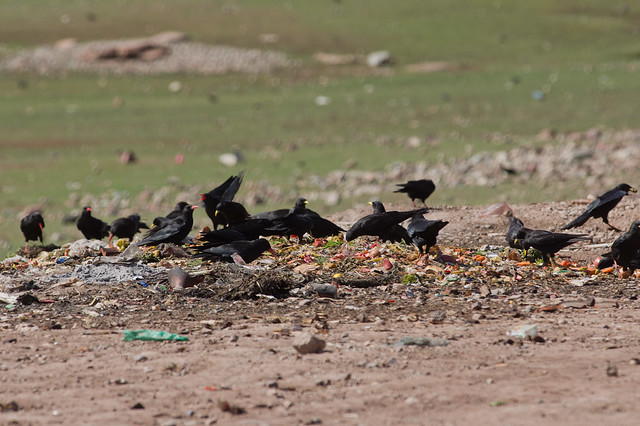 |
| Choughs and Alpine Choughs |
We headed on to the second car park at the bottom of the ski lift, but decided against a bit of impromptu skiing, and set off into the rocky mountainside instead. We hadn't gone very far when we found the first new bird, a jazzy Seebohm's Wheatear. Technically this is just a sub-species of our Northern Wheatear, but given its distinctive looks and restricted range I suspect it won't be long before I get an armchair tick.
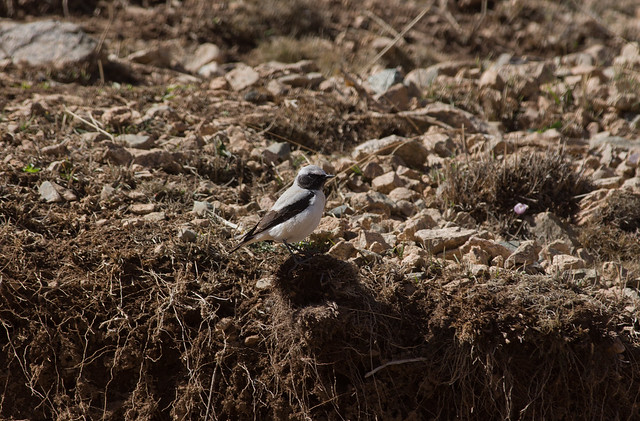 |
| Seebohm's Wheatear |
Finding the next birds took a little longer in the seemingly barren rocky slopes, but there was some alternative interest in the shape of an Atlas Day Gecko basking in the open. Finally we glimpsed some movement and caught a glimpse of an Atlas Shore Lark creeping through the rocks. One soon turned into four, and we enjoyed some excellent views of this recently split Atlas endemic. It proved to be the last new species at Oukaimeden, the hoped for Crimson-winged Finches were nowhere to be found.
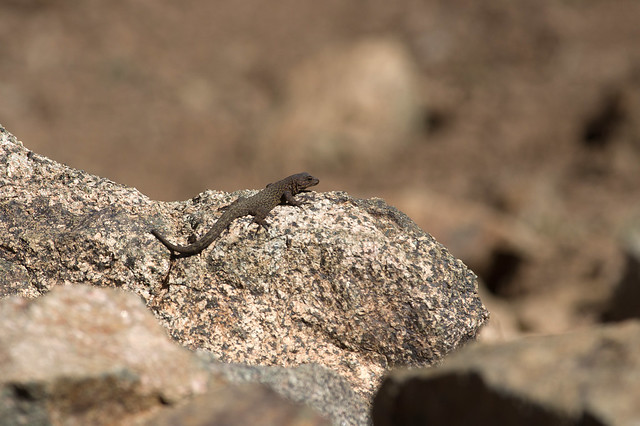 |
| Atlas Day Gecko |
 |
| Atlas Shore Lark |
Our next stop was the Ourika Valley, where scenery rather than birding was the main order of the day, but we did get some further views of African Blue Tits and Chaffinches, as well as a Grey Wagtail feeding in the fast-flowing river. We headed back to Marrakech, stopping off for a brief taste of the locally produced Argan oil.
The following day we headed out towards the El Badi palace, now largely in ruins, but whose walls still stood and hold a sizeable number of nesting White Storks. I spent an entertaining thirty minutes or so trying to get some decent photos of these spectacular birds, with brief breaks to snap the ubiquitous House Buntings. Down in the orange trees at the bottom of the palace we had the usual suspects in the shape of Spotless Starlings and House Sparrows, as well as several Barn Swallows presumably taking a break from their migration northwards.
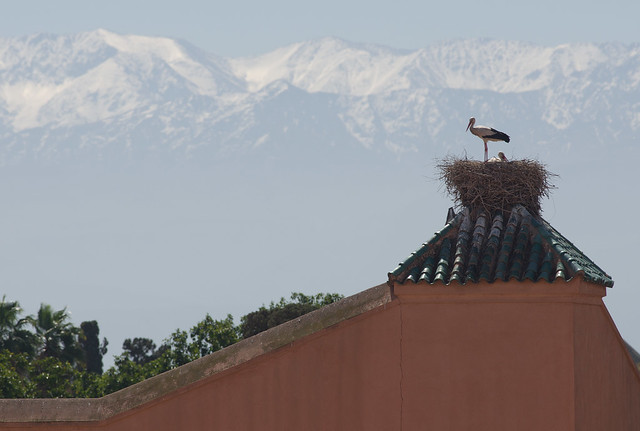 |
| Stork nest with the Atlas Mountains in the background |
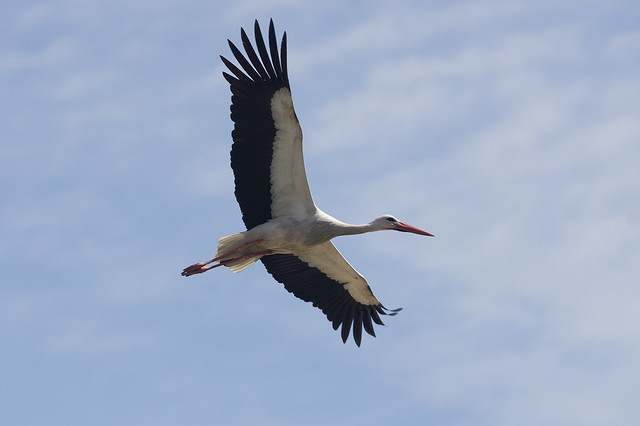 |
| White Stork |
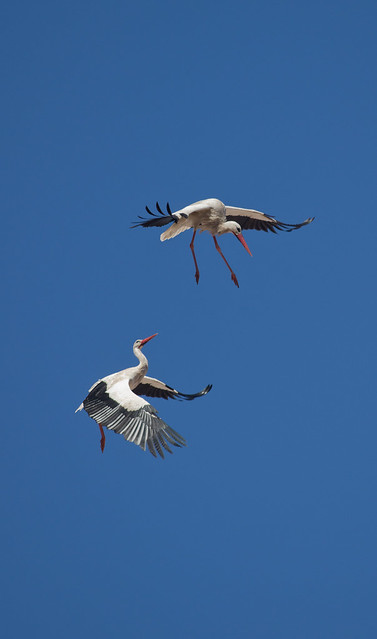 |
| Pair of storks having a dance-off |
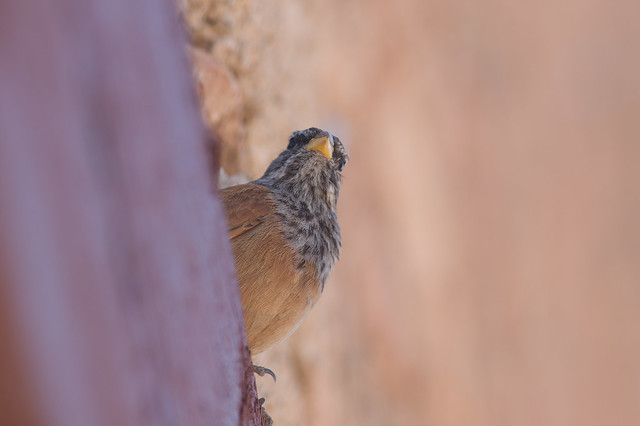 |
| House Bunting wondering what that big shiny thing being pointed at it is |
After a busy day in the city we were grateful for the sanctuary of the roof terrace, and as the evening drew in, and the swifts started to gather, we had the unexpected bonus of a Booted Eagle drifting overhead, perhaps another migrant on its way north. This proved to be the first of four Booted Eagles over the next 24 hours, not a bad bird to see on a city break!
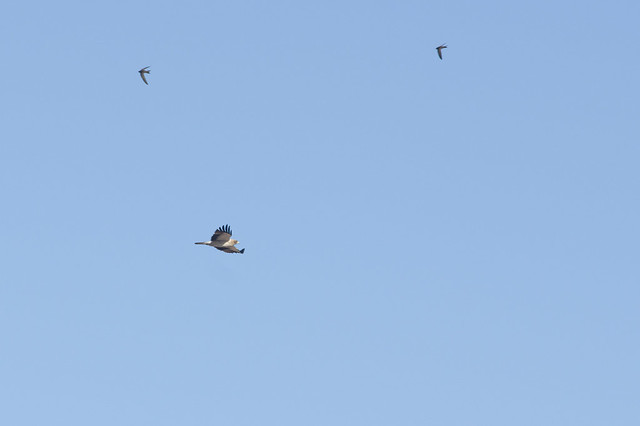 |
| Booted Eagle drifting past |
I have a feeling we'll be making another trip to Morocco some day to experience some more of the country, maybe heading down to the desert, and definitely having another go at finding crimson-winged finches! Marrakech was a great city to stay in for a short break, a real culture shock, glorious sunshine and surprisingly good wildlife, especially with the Atlas mountains so close.

